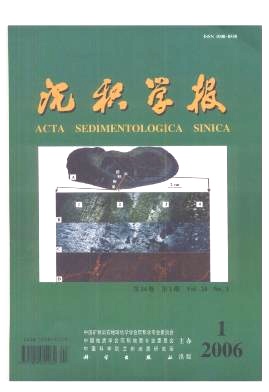Organic Petrological Study on Hydrocarbon Generation and Expulsion from Organicrich Black Shale and Oil Shale
- Received Date: 1900-01-01
- Rev Recd Date: 1900-01-01
- Publish Date: 2006-02-10
-
Key words:
- marine black shale /
- lacustrine oil shale /
- organic petrology /
- hydrocarbon generation and expulsion /
- microscopic fluorescence
Abstract: By utilizing both modern organic petrological and organic geochemical analytical methods, a comparative study was carried out on the maceral ingredients of the Lower Paleozoic organicrich marine black shale in Sichuan Basin and the Paleogene lacustrine oil shale in Bohai Gulf Basin, and on their relationship with thermal evolution, hydrocarbon generation and expulsion. Our observation and the analytical results demonstrate that the black shale are characterized by high degree of thermal evolution and currently very low concentration of hydrocarbons derived from pyrolysis, and are favorablesource rocks in terms of primary hydrocarbon generation capacity, since they generally contain a relic organic carbon content up to 1%3%. However, the black shale retains a great amount of particulate organicmaterials originated from amorphous organics and relict bitumen derived from oil that has not been expelled completely at the earlier stage of oil generation in preCaledonian. Based on the contents of microsomers and relict bitumen in black shale, the amount of hydrocarbon generation and expulsion in the marine black shale can be calculated, and the contribution of gas regeneration in the reservoir bitumen, particulate organics and relict bitumen in old petroleum deposits toward the formation of the Paleozoic carbonate gas reservoirs in the study area can thus be inferred.
The organicrich Paleogene lacustrine oil shale don't show high degree of thermal evolution, since they are characterized by very high contents in bothS1(free hydrocarbon) and S2(pyrolyzed hydrocarbon), which are 2.048.06 mg.g-1and 8.444.65 mg.g-1, respectively, from pyrolytic analyses. The algae and amorphous organics in oil shale generally show strong yellow fluorescence. Also, extensive fluorescence can be observed among a great amount of laminae and mineral crystallites. These results illustrate that the oil shale are important source rocks at the stage of hydrocarbon generation and expulsion in the study area.
| Citation: | ZENG Qinghui. Organic Petrological Study on Hydrocarbon Generation and Expulsion from Organicrich Black Shale and Oil Shale[J]. Acta Sedimentologica Sinica, 2006, 24(1): 113-122. |






 DownLoad:
DownLoad: